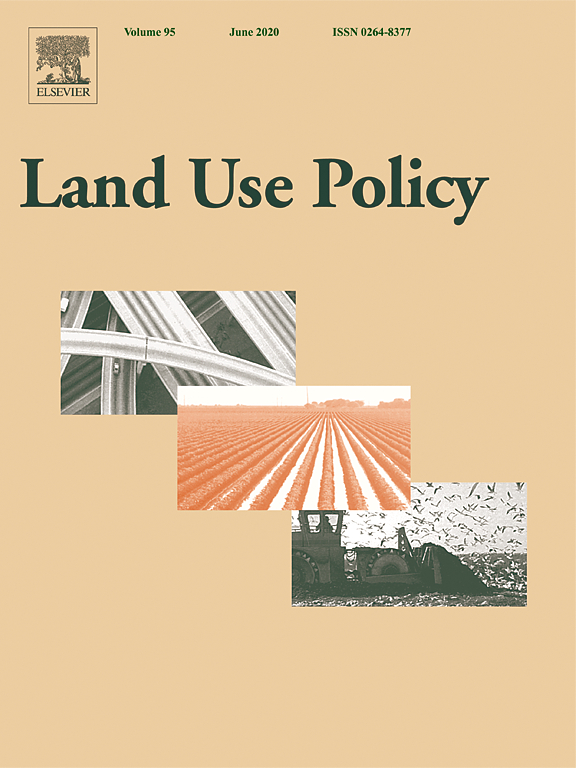Location
Land Use Policy is an international and interdisciplinary journal concerned with the social, economic, political, legal, physical and planning aspects of urban and rural land use. It provides a forum for the exchange of ideas and information from the diverse range of disciplines and interest groups which must be combined to formulate effective land use policies. The journal examines issues in geography, agriculture, forestry, irrigation, environmental conservation, housing, urban development and transport in both developed and developing countries through major refereed articles and shorter viewpoint pieces.
Land Use Policy aims to provide policy guidance to governments and planners and it is also a valuable teaching resource.
ISSN: 0264-8377
Members:
Resources
Displaying 166 - 170 of 279Typology and distribution of small farms in Europe: Towards a better picture
The contribution of small farms to local food supply, food security and food sovereignty is widely acknowledged at a global level. In the particular case of Europe, they often are seen as an alternative to large and specialised farms. Assessing the real role of small farms has been limited by a lack of information, as small farms are frequently omitted from agricultural censuses and national statistics.
Livestock-derived greenhouse gas emissions in a diversified grazing system in the endangered Pampa biome, Southern Brazil
Discussions about climate change have repeatedly regarded livestock as responsible for a significant contribution of greenhouse gas emissions. However, proper management schemes for livestock production may contribute to a reduction in emissions and, at the same time, induce optimization of production systems and intensification of food production.
Spatial and temporal patterns of land clearing during policy change
Environmental policies and regulations have been instrumental in influencing deforestation rates around the world. Understanding how these policies change stakeholder behaviours is critical for determining policy impact. In Queensland, Australia, changes in native vegetation management policy seem to have influenced land clearing behaviour of landholders. Periods of peak clearing rates have been associated with periods preceding the introduction of stricter legislation. However, the characteristics of clearing patterns during the last two decades are poorly understood.
Methods for landscape characterisation and mapping: A systematic review
Due to the multidisciplinary nature of landscape research, many different systems and methods for landscape identification and classification exist. This paper provides a systematic review of 54 contemporary landscape characterisation approaches from all over the world, with the aim of identifying major methodological strategies. Multivariate statistical analyses revealed segregation of the approaches according to the landscape concept applied, the degree of observer independence and various other factors involved in the landscape characterisation process.
Using spatially explicit data to improve our understanding of land supply responses: An application to the cropland effects of global sustainable irrigation in the Americas
Land supply elasticities determine the rates of land conversion in global policy models. However, they are only available for few countries in the world. Therefore, analysts seeking to improve the spatial resolution of their models are forced to impose regionally homogeneous parameters over highly heterogeneous regions. This article estimates spatially explicit land supply elasticities using gridded data for the American continent. These estimates reasonably reproduce changes in land use observed at different levels of geographical aggregation across the continent.



